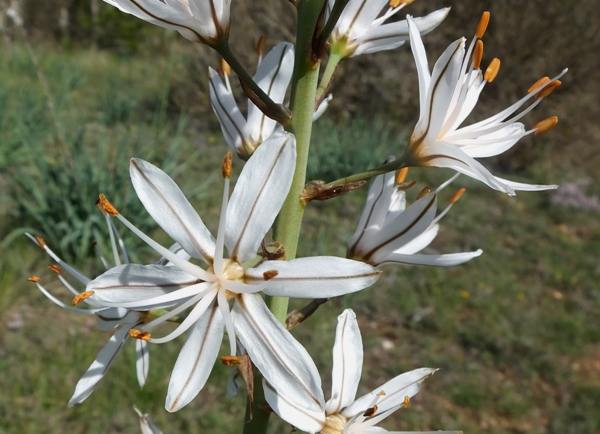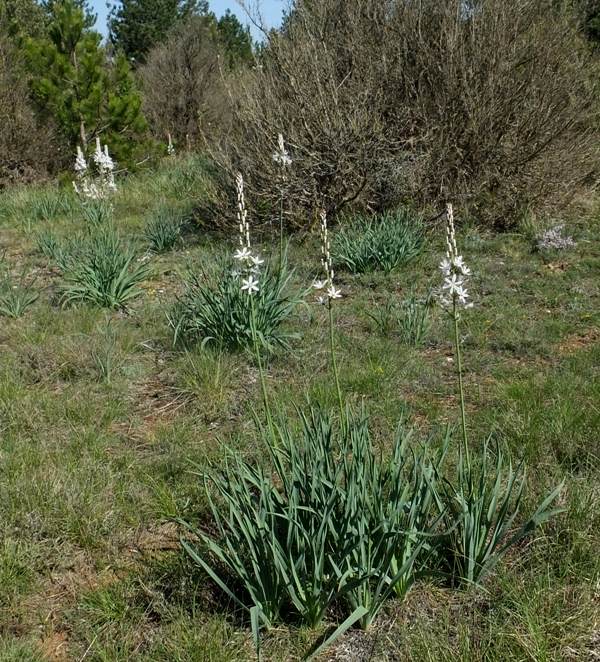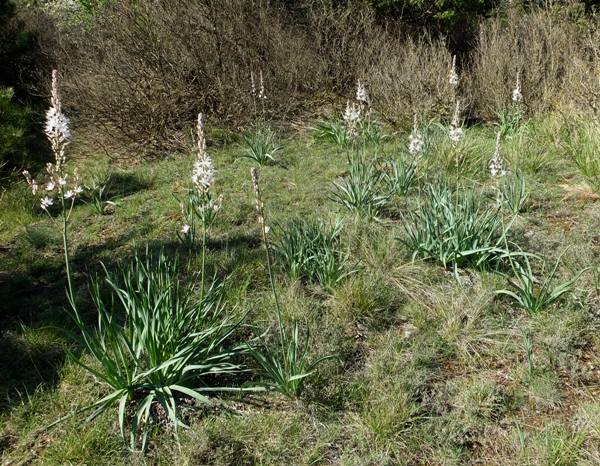Asphodelus albus - White-flowered Asphodel
Phylum: Magnoliophyta - Class: Equisetopsida - Order: Asparagales - Family: Xanthorrhoeaceae

Description
Growing to typically 90cm tall and sometimes to 120cm, White-flowered Asphodel - sometimes referred to as White Asphodel - has an inflorescence that open from the bottom upwards. Its white flowers each have six long petals in a corolla 30 to 40mm across. The petals have a distinct brown central stripe.
The leaves, all of which originate from the stem base, are straplike and hairless, typically 2cm wide and 45 to 70 cm long.
Distribution
This Mediterranean plant is particularly common and widespread in Spain and in southern France and eastwards to the Balkans; it is also reported to occur in parts of Libya.
Habitat
Found from sea level up to 2000 metres, Asphodelus albus favours alkaline soils and occurs in meadows and on rocky hillsides, especially where trees provide some shelter from the wind.
Flowering Times
Depending on altitude, White Asphodel can be seen in bloom between mid April and the end of July.

This striking wildflower often forms large colonies, with the plants sometimes forming quite significant clumps.
Etymology
Asphodelus, the genus name, comes from Greek and is reported to be a reference to a king's spear - the flower spikes do indeed look rather like ornate spears. The specific epithet albus is Latin and means 'white'.

The specimens shown on this page were seen in the Aveyron region of southern France during May.
Please Help Us: If you have found this information interesting and useful, please consider helping to keep First Nature online by making a small donation towards the web hosting and internet costs.
Any donations over and above the essential running costs will help support the conservation work of Plantlife, the Rivers Trust and charitable botanic gardens - as do author royalties and publisher proceeds from books by Pat and Sue.

